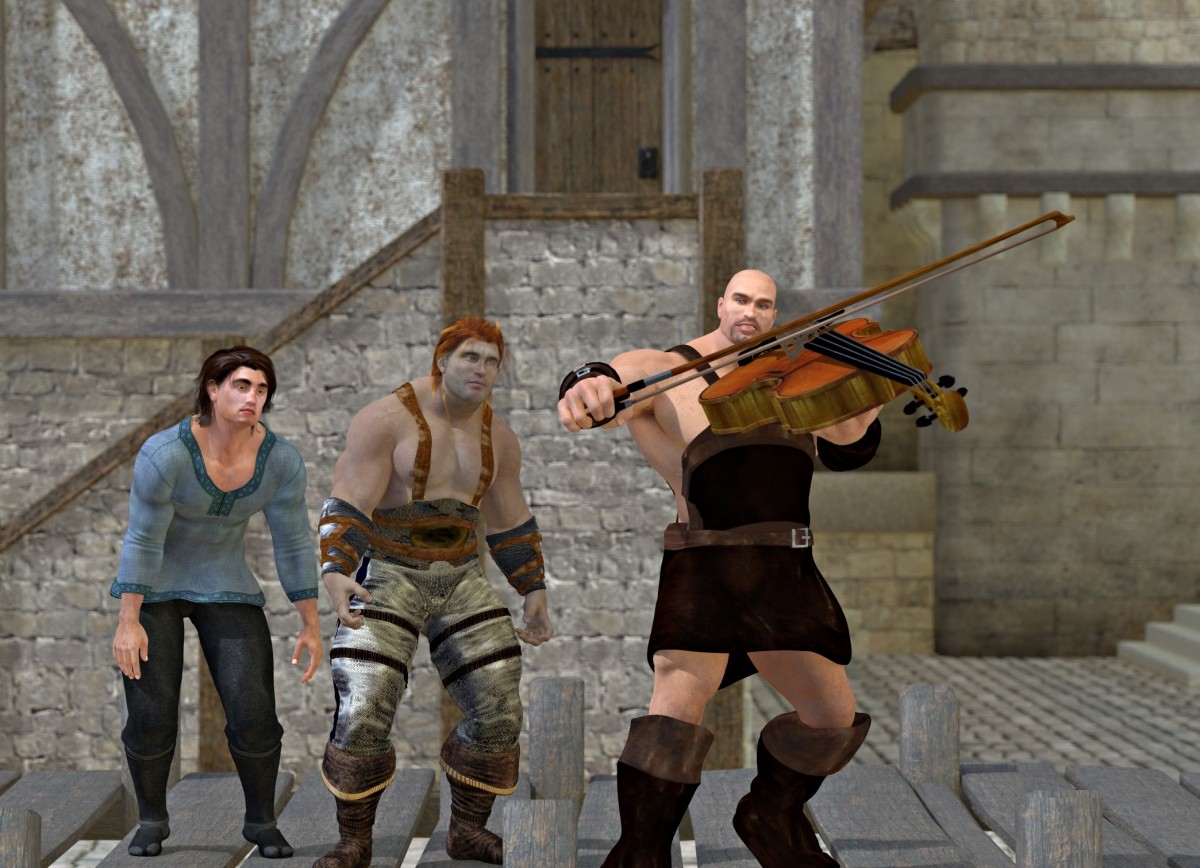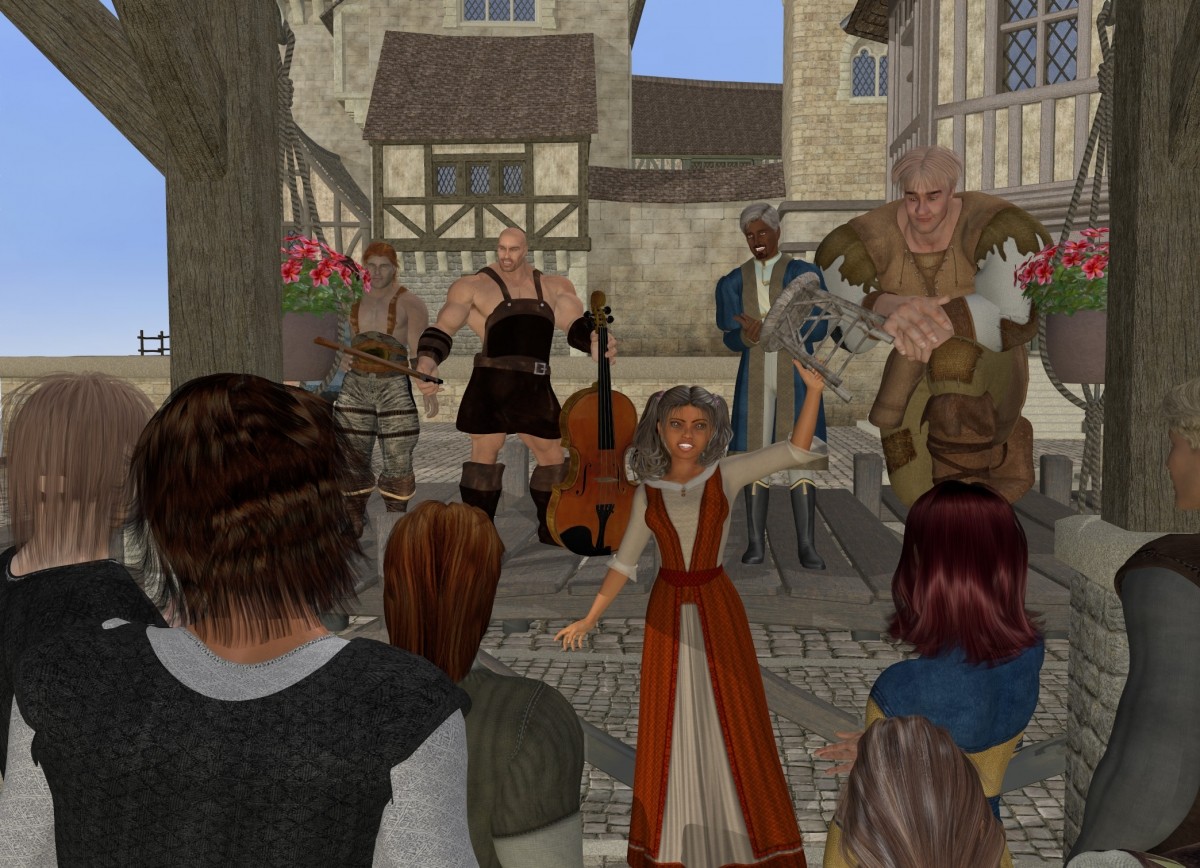Poser Creator and author Allen Forbes II was attending a concert in 1991 when inspiration struck.
"I saw a small-sized woman behind a cello. I thought something to the effect, 'That's like a giant violin. What if it was a giant's violin?'" he explained.
The idea stuck with him for years and became the foundation for the Farfairhaven series, which explains the fairy-tale origins of symphony instruments.
"This first one is about a giant with a sleeping problem who loves to play his giant violin all night long. The solution inspires the creation of the cello," Forbes explained about the first book, "Hello, My Name is Cello." He published a digital-only version in 2015. He decided to bring his idea to life with two versions of the first story, a full picture book and poetry version for younger readers and a prose version for more advanced readers.
"After the birth of my first kid, I fully committed to the idea of bringing it to life. I wanted him to know it's never too late to pursue a dream," Forbes said. Forbes created all the illustrations for "Hello, My Name is Cello" in Poser for Mac with post-work done in Photoshop before laying it out in Apple's Pages.
In 2020, he created new renders and additional content to release it as print-on-demand. Now he's awaiting the release of Poser 12 for Mac, which is expected in late January. The software is currently in beta testing.
"I always wanted a printed copy because holding something I've created has always been the most exciting for me. 2020 seemed like the right time to create a new and improved version with better renders and more content," Forbes said.
Forbes has two more stories written that need illustrations before they are released in print-on-demand like the first book. You can learn about the book and plans for future books at farfairhaven.com. You can learn more about his process for creating the illustrations for "Hello, My Name in Cello" below.
How long have you been creating digital art and why did you start?
Forbes: I started using computers to make art in 1996. So I've been at it a long time. Digital coloring for comic books was really taking off back then, and I wanted to learn how to do that. I took one class and taught myself the rest.
How long have you used Poser?
Forbes: I was an early adopter. Fractal Design Poser was my first copy. Loved the idea of a virtual mannequin with lighting references. I had a copy of Poser 3, then jumped to Poser 5, and I've been on nearly every iteration since. Because my focus in recent years has been to use Poser for storytelling, I find the animation tools to be particularly useful. I can create multiple shots in a single scene, treating each key frame as a panel or page.
Tell me more about how you use the animation tools. How can you create multiple shots for a single scene?
Forbes: Anytime I need to make a sequence of images in the same location or setting for a scene, I build in everything I need into the first key frame. I then move to frame 2 and reposition everything and so on. I can change camera angle, move things in and out of frame. For example, stuff that I don't need in a particular frame will get dropped well below ground to stay out of the way. I use the Hierarchy palette to quickly find anything I might need to manipulate. I wish the palette has an auto-collapse option... maybe someday. Finally, I use the movie render option and render out a batch of images. I can then retouch as needed, adding post work and enhancements, before placing into my layout.
What's your workflow in creating images for the book?
Forbes: With the children's books, I start with the story. Then I make a list of illustrations to break the story up. I create master files for the cast. Then I make an import file to bring the cast into each scene I need. Once I build out each scene, I make a draft render to layout the book. Then I do medium-quality test renders to see if there's any missed poke through and to check for any additional adjustments to make. Then it's on to final renders and retouching/post work.
The import files are another key to my success, as they have each cast member in T-pose with all lights deleted, so they can be imported into another scene.
Another trick I use to manage large crowd scenes is creating clusters of people. I build and empty scene with an average of three to 12 people. I then export the whole group as an object, import that and create a prop. Those props can be imported. Just by changing rotation and position, I can make the crowd look different and dynamic in spite of their static posing. It's a more flexible option than billboards.
I'm still learning Superfly so these books were all Firefly rendered.
That crowd workaround is a good idea. Have you discovered any other workarounds or hacks that help in the creation process?
Forbes: I consider myself something of a pose aficionado. (I've marketed several pose sets in the past.) So I find the Lit Wireframe display style most effective for getting poses just right, especially where one element touches another, like hands on hips, for example. I obsess about making sure the figures in a scene look like gravity is noticeable. So I will push a figure slightly into something to make sure the contact is solid by considering that in real life soft bodies deform to varying degrees when connecting with hard bodies. Because the models don't smush in that way, I compensate with minor bit of poke-through.
I also collect a lot of little props and accessories to load a scene with the right amount of details for ideal believability. A lot of scene sets don't load up on the details, like a kitchen without any dishes. That means spending extra time piling up dishes in the cabinets, or adding in a drying rack or a coffee pot.
My DeviantArt gallery has some great examples of this, too. If it helps, I can collect and/or create some example renders.
Poser offers users the ability to use interactive 3D figure design to create art, illustration, animation, comics, web, print, education, medical, games, story boarding, and more. Using the program, creators can bring their stories, dreams and fantasies to life. From historic to contemporary, sci-fi to fantasy, Poser is the 3D graphics software tool used by professionals and hobbyists alike.
That's why we want to take a closer look at some of the creators who leverage the power of Poser to create. Email us at mwillard@renderosity.com if you would like to participate in the Creator Series.
What can you create? Let us know on Twitter at @poserpro, using #CreateWithPoser
.png)


.jpg)














